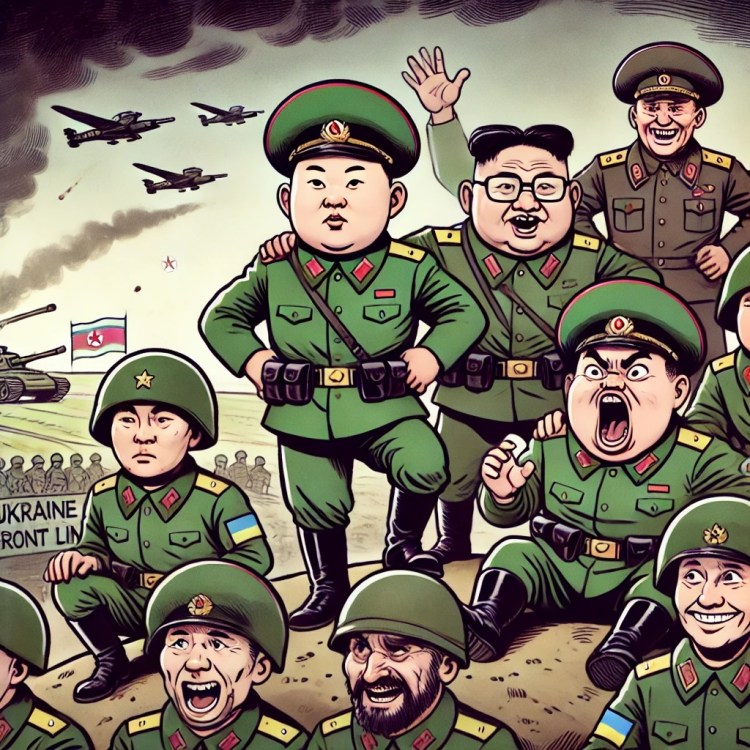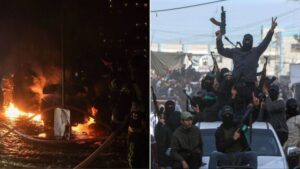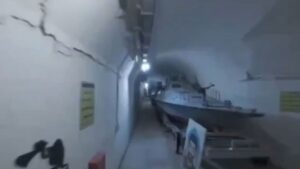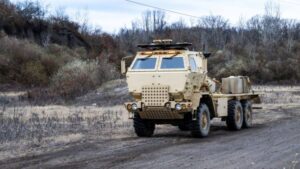As Russia scrambles for fresh manpower in Ukraine, reports indicate that North Korean soldiers have quietly joined their ranks. This isn’t your run-of-the-mill foreign legion story but rather a high-stakes geopolitical chess move that could have unpredictable consequences.
While Rocket Man’s participation might appear to bolster Moscow’s ranks, these troops are relatively green, and their deployment into the grinding conflict could lead to heavy losses.
Who Are These Troops?
North Korea’s soldiers are known for their ideological loyalty and discipline, instilled through rigorous indoctrination and physical training. But as Jocko would tell you, “discipline” doesn’t equal “combat experience,” and despite their extensive physical preparation, many North Korean soldiers lack the combat hardening that comes from real battlefield experience.
Pyongyang may be eager to boost its relationship with Russia, but these troops are, in reality, a mix of youthful conscripts and poorly equipped forces compared to seasoned fighters already entrenched in the Ukraine conflict.
It’s like throwing a pack of first-day interns into a Wolf of Wall Street 24/7 grind—there’s bound to be friction, burnout, lots of screaming, and in this case, potential casualties at a level that will have ripple effects in Pyongyang.
Russia’s promise of mutual support and a deepened alliance with North Korea comes with high stakes for both sides: North Korean troops may face battlefield environments unlike anything they’ve been exposed to, while Russia must now accommodate a force with a vastly different cultural and command structure.
SOFREP has talked about how the Russian top-heavy command structure limits decision-making on the ground that gives up tactical advantage. Example: Western military strategy allows for junior officers and enlisted to make decisions based on an overall strategic objective where Russian strategy relies on top officers only to make decisions which limit battlefield effectiveness.
This is like a janitor at Google who is waiting for permission to mop up a hallway spill while he stands at the ready with a mop bucket at hand, not allowed to clean up the mess until authorized by his direct superior to do so.
As Russia scrambles for fresh manpower in Ukraine, reports indicate that North Korean soldiers have quietly joined their ranks. This isn’t your run-of-the-mill foreign legion story but rather a high-stakes geopolitical chess move that could have unpredictable consequences.
While Rocket Man’s participation might appear to bolster Moscow’s ranks, these troops are relatively green, and their deployment into the grinding conflict could lead to heavy losses.
Who Are These Troops?
North Korea’s soldiers are known for their ideological loyalty and discipline, instilled through rigorous indoctrination and physical training. But as Jocko would tell you, “discipline” doesn’t equal “combat experience,” and despite their extensive physical preparation, many North Korean soldiers lack the combat hardening that comes from real battlefield experience.
Pyongyang may be eager to boost its relationship with Russia, but these troops are, in reality, a mix of youthful conscripts and poorly equipped forces compared to seasoned fighters already entrenched in the Ukraine conflict.
It’s like throwing a pack of first-day interns into a Wolf of Wall Street 24/7 grind—there’s bound to be friction, burnout, lots of screaming, and in this case, potential casualties at a level that will have ripple effects in Pyongyang.
Russia’s promise of mutual support and a deepened alliance with North Korea comes with high stakes for both sides: North Korean troops may face battlefield environments unlike anything they’ve been exposed to, while Russia must now accommodate a force with a vastly different cultural and command structure.
SOFREP has talked about how the Russian top-heavy command structure limits decision-making on the ground that gives up tactical advantage. Example: Western military strategy allows for junior officers and enlisted to make decisions based on an overall strategic objective where Russian strategy relies on top officers only to make decisions which limit battlefield effectiveness.
This is like a janitor at Google who is waiting for permission to mop up a hallway spill while he stands at the ready with a mop bucket at hand, not allowed to clean up the mess until authorized by his direct superior to do so.
Putin’s Potential Deployment Strategy
With Ukrainian forces firmly dug in and Russia’s own forces stretched thin, North Korean troops could be used for tasks that don’t demand high-tech equipment or combat experience but still carry significant risk. Expect them to serve in secondary but dangerous roles—guard duty, logistics, or even cannon fodder in risky offensives where more experienced Russian units can’t afford to suffer casualties. Think of it as a war-time internship program that’s bound to end poorly for anyone involved.
In a realpolitik twist, North Korean troops may also be deployed to areas where their potential losses could be shrugged off by Moscow—frontline areas with high casualty rates that Russian leadership has labeled “expendable.” The objective here is simple: North Korean forces may provide critical mass to blunt Ukrainian offensives or help Moscow reinforce defensive lines without putting Russia’s own more experienced units in jeopardy. But the downside? If they start coming home in caskets, it could sour Pyongyang’s support and raise serious morale issues in an already isolated North Korea.
Current Losses for Both Sides
The war has been grueling on both sides. Russian and Ukrainian forces have each suffered substantial losses, with the latest estimates indicating that tens of thousands of soldiers have been killed or injured. While exact figures are elusive due to the fog of war and propaganda, Western intelligence agencies estimate Russian casualties to be upwards of 100,000 (including wounded), while Ukrainian forces, though resilient, have suffered similarly heavy tolls as they repel Russian advances. These estimates are also very conservative. I would estimate the losses on both sides at over 200,000 given the duration and brutality of the conflict and the fact that Putin has turned to the prisons to bolster his ground force.
Injecting inexperienced North Korean troops into this kind of environment is like tossing an amateur boxer into a UFC ring. They may bring numbers, but numbers alone can’t win a war, especially against an entrenched and battle-tested opponent like Ukraine.
What This Means for the Global Stage
On the world stage, this deployment complicates an already volatile conflict. North Korea’s involvement marks a new chapter, pulling Pyongyang directly into the web of European warfare. It’s a calculated risk by both Putin and Kim Jong-un that signals desperation and hints at the need for broader alliances as international condemnation and sanctions mount.
For the United States and its allies, this escalation may serve as a call to bolster their support for Ukraine and potentially intensify sanctions on Russia and North Korea. For Putin, the gamble could yield short-term gains but risks long-term blowback—mass casualties among North Korean forces would send shockwaves through Pyongyang and risk destabilizing Russia’s carefully curated relationship with North Korea.
Conclusion
If North Korean troops continue to enter the Russian-Ukrainian frontlines, we may be witnessing a strategic blunder that exposes the limits of authoritarian alliances. These are not battle-hardened elite forces; they’re a risky bet by Putin, who’s now rolling the dice on inexperienced allies to plug holes in his frontlines. And as they go through the grinder of modern warfare, the world will watch to see if this new addition to Russia’s ranks tips the scales—or simply ends up as more casualties in an already brutal conflict.
Source material:
https://www.rand.org/pubs/commentary/2024/09/north-korea-explained-what-americans-need-to-know.html
The conventional military balance on the Korean Peninsula
https://www.iiss.org/research-paper/2018/06/military-balance-korean-peninsula/



